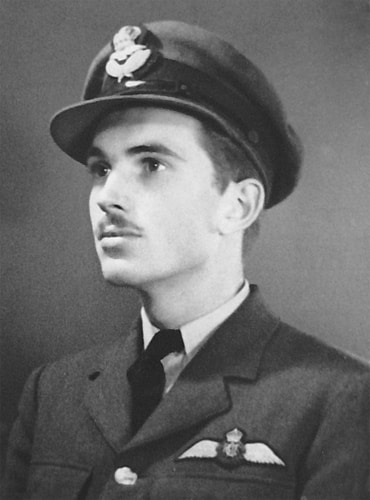Flying High with John Gillespie Magee

Guest Post by Laura Bridge.
“High Flight” by John Gillespie Magee (1941) is a special poem that I discovered at just the right moment. It was March 2020. In the UK, schools were preparing to close due to Covid-19. I was supposed to be teaching my class of eleven-year-olds about the Second World War, but the children were anxious and restless; I did not want to add to their worries. In a frantic panic to find something uplifting but still on topic, I came across Magee’s sonnet. It was the perfect combination of energy and hope.
We enjoyed imagining what flying a plane must feel like—the freedom, excitement, and the noise. We were surprised by Magee’s descriptions of ‘sunlit silence’ and loved his ‘eager craft’ as though the plane was enjoying these airborne games as much as he was.
Magee sent his poem in a letter to reassure his parents that life at war was not as bad as they may fear. The “easy grace” and “tumbling mirth” he felt when in the sky flies from the page. He focuses not on the risks of flying, but on the liberty he feels as he travels through the “sanctity of space.”
In a tragic postscript, Magee died during flying drills just months after finishing the poem. While my class found this revelation sad, they took the poem as proof that he had lived, and died, doing something he loved.
“High Flight” was the ideal way to share with the children that even when there are “surly bonds” holding you back, there are always ways to find fun and laughter. This was the perfect message to send home with the children as we entered our first lockdown, and can remind us to look for the good in life, even in the hardest times.
High Flight by John Gillespie Magee.
Reviewer bio: Laura Bridge is a writer and teacher living in Bath, England. She is currently studying for a MA in Writing for Young People at Bath Spa University. Find her on Twitter @laurabridge.




